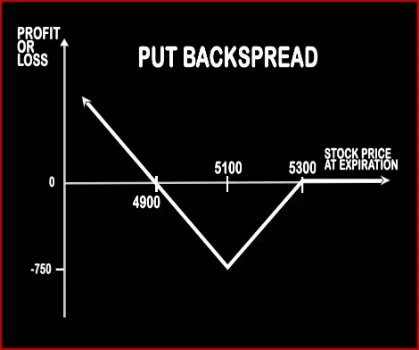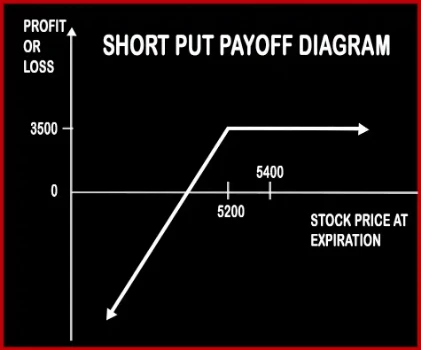Compare Strategies
| PUT BACKSPREAD | SHORT PUT | |
|---|---|---|

|

|
|
| About Strategy |
Put Backspread Option StrategyIf the trader is bearish on market and bullish in volatility, he will implement this strategy. However the trader can be neutral in nature i.e. indifferent if the market moves in either of the direction, this strategy will make profits, but uptrend will give a capped income than downtrend which will give unlimited returns. |
Short Put Option StrategyA trader will short put if he is bullish in nature and expects the underlying asset not to fall below a certain level. Risk: Losses will be potentially unlimited if the stock skyrockets above the strike price of put. |
PUT BACKSPREAD Vs SHORT PUT - Details
| PUT BACKSPREAD | SHORT PUT | |
|---|---|---|
| Market View | Bearish | Bullish |
| Type (CE/PE) | PE (Put Option) | PE (Put Option) |
| Number Of Positions | 2 | 1 |
| Strategy Level | Advance | Beginners |
| Reward Profile | Limited | |
| Risk Profile | Unlimited | |
| Breakeven Point | Strike Price - Premium |
PUT BACKSPREAD Vs SHORT PUT - When & How to use ?
| PUT BACKSPREAD | SHORT PUT | |
|---|---|---|
| Market View | Bearish | Bullish |
| When to use? | This strategy works well when you're Bullish that the price of the underlying will not fall beyond a certain level. | |
| Action | Sell Put Option | |
| Breakeven Point | Strike Price - Premium |
PUT BACKSPREAD Vs SHORT PUT - Risk & Reward
| PUT BACKSPREAD | SHORT PUT | |
|---|---|---|
| Maximum Profit Scenario | Premium received in your account when you sell the Put Option. | |
| Maximum Loss Scenario | Unlimited (When the price of the underlying falls.) | |
| Risk | Limited | Unlimited |
| Reward | Unlimited | Limited |
PUT BACKSPREAD Vs SHORT PUT - Strategy Pros & Cons
| PUT BACKSPREAD | SHORT PUT | |
|---|---|---|
| Similar Strategies | Bull Put Spread, Short Starddle | |
| Disadvantage | • Unlimited risk. • Huge losses if the price of the underlying stock falls steeply. | |
| Advantages | • Benefit from time decay. • Less capital required than buying the stock outright. • Profit when underlying stock price rise, move sideways or drop by a relatively small account. |